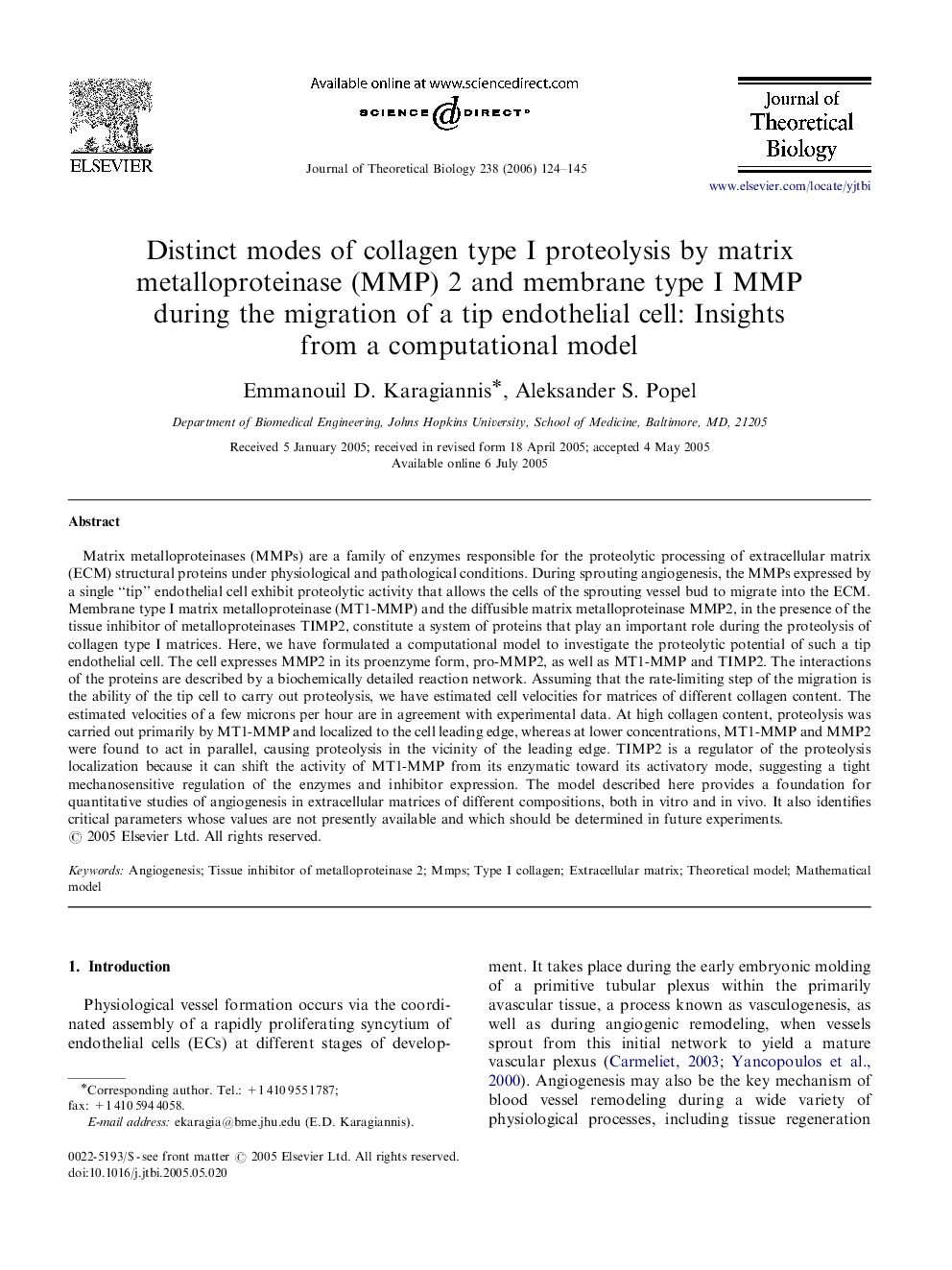| کد مقاله | کد نشریه | سال انتشار | مقاله انگلیسی | نسخه تمام متن |
|---|---|---|---|---|
| 4499782 | 1319051 | 2006 | 22 صفحه PDF | دانلود رایگان |

Matrix metalloproteinases (MMPs) are a family of enzymes responsible for the proteolytic processing of extracellular matrix (ECM) structural proteins under physiological and pathological conditions. During sprouting angiogenesis, the MMPs expressed by a single “tip” endothelial cell exhibit proteolytic activity that allows the cells of the sprouting vessel bud to migrate into the ECM. Membrane type I matrix metalloproteinase (MT1-MMP) and the diffusible matrix metalloproteinase MMP2, in the presence of the tissue inhibitor of metalloproteinases TIMP2, constitute a system of proteins that play an important role during the proteolysis of collagen type I matrices. Here, we have formulated a computational model to investigate the proteolytic potential of such a tip endothelial cell. The cell expresses MMP2 in its proenzyme form, pro-MMP2, as well as MT1-MMP and TIMP2. The interactions of the proteins are described by a biochemically detailed reaction network. Assuming that the rate-limiting step of the migration is the ability of the tip cell to carry out proteolysis, we have estimated cell velocities for matrices of different collagen content. The estimated velocities of a few microns per hour are in agreement with experimental data. At high collagen content, proteolysis was carried out primarily by MT1-MMP and localized to the cell leading edge, whereas at lower concentrations, MT1-MMP and MMP2 were found to act in parallel, causing proteolysis in the vicinity of the leading edge. TIMP2 is a regulator of the proteolysis localization because it can shift the activity of MT1-MMP from its enzymatic toward its activatory mode, suggesting a tight mechanosensitive regulation of the enzymes and inhibitor expression. The model described here provides a foundation for quantitative studies of angiogenesis in extracellular matrices of different compositions, both in vitro and in vivo. It also identifies critical parameters whose values are not presently available and which should be determined in future experiments.
Journal: Journal of Theoretical Biology - Volume 238, Issue 1, 7 January 2006, Pages 124–145